Art Facts is one of the number one sources to learn about art. That’s why we have created an art history timeline that documents the history of Western Art.
On this page, you can learn about the art movements in chronological order, as well as the most famous artists and the artworks they produced during these periods.
Please note: This page will be constantly updated as more articles are added to Art Facts. Make sure to bookmark this page for future reference.
Romanesque Art – 1000-1150
Romanesque art emerged around the year 1000 A.D. and followed the extended period called the Dark Ages. This period of low cultural activity followed the Fall of the Western Roman Empire in 476 A.D.
It was greatly influenced by Byzantine art and continued until it was replaced by Gothic art in the 12th century. Embroidery, sculptures, wall paintings, manuscripts, and stained glass were produced during this time.

Learn More about Romanesque Art on Art Facts
Romanesque Artworks A-Z
| Bayeux Tapestry (the 1170s) | Bayeux Museum |
| Shrine of the Three Kings | Cologne Cathedral |
| Stavelot Triptych | Morgan Museum & Library |
Gothic Art – 1150-1500
The exact date that Romanesque art was replaced with Gothic art is rather obscure. It developed in northern France in the 12th century and spread all across Europe. It never really managed to gain ground in Italy.
The style continued until the late 15th century, especially in Germany, before being replaced by the Renaissance. Sculptures decorating churches and panel paintings are the highlights of this movement.
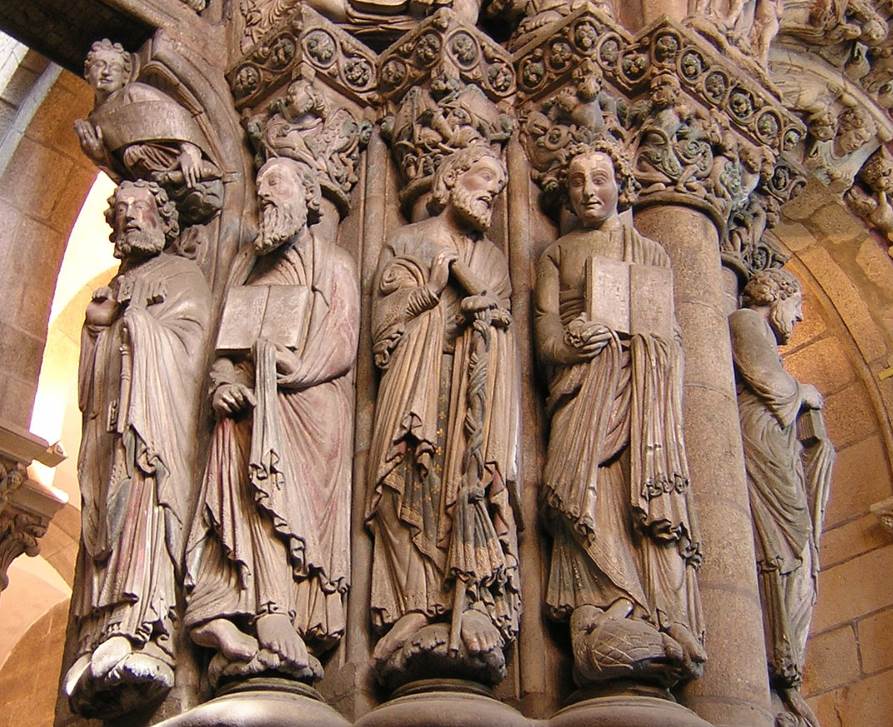
Learn More about Gothic Art on Art Facts
Gothic Artworks A-Z
| Ognissanti Madonna | Uffizi Gallery |
| Rucellai Madonna | Uffizi Gallery |
| Well of Moses | Chartreuse de Champmol |
Renaissance Art – 1400-1520
The Renaissance didn’t just impact visual arts, it was a cultural movement that transformed from the dark Middle Ages into a completely new era. It started in the late 14th century and lasted for several centuries.
The core values of the Renaissance were derived from classical antiquity which resulted in ne social values. Some of the most famous artworks in history were produced during this era. Some of the greatest minds in history also lived during this period.

Learn More about Renaissance Art on Art Facts
- What is Renaissance Art?
- Renaissance Artists
- Renaissance Sculptors
- Renaissance Paintings
- Renaissance Sculptures and Reliefs
Renaissance Artists A-Z
| Bosch, Hieronymus (1450-1516) | 10 Bosch Paintings |
| Botticelli, Sandro (1445-1510) | 10 Botticelli Paintings |
| Bramante, Donato (1444-1515) | 8 Bramante Works |
| Bruegel the Elder, Pieter (1525-1569) | 10 Bruegel Paintings |
| Brunelleschi, Filippo (1377-1446) | 10 Brunelleschi Works |
| Da Vinci, Leonardo (1452-1519) | 20 Da Vinci Artworks |
| Donatello (1386-1466) | 10 Donatello Sculptures |
| Michelangelo (1475-1564) | 17 Michelangelo Works |
| Raphael (1483-1520) | 18 Raphael Paintings |
| Titian (1488-1576) | 15 Titian Paintings |
| Van Eyck, Jan (1380-1441) | 12 Van Eyck Paintings |
Mannerism 1520 – 1600
Mannerism is the term often used to describe a period called the Late Renaissance. It started at the end of the High Renaissance in the early 1520s and continued until the end of the 16th century.
While the Renaissance was all about balance and harmony, the Mannerist era is defined by exaggerating these characteristics to suit the artistic purpose of painters and sculptors. This often resulted in asymmetrical and unbalanced compositions.

Learn More about Mannerism Art on Art Facts
Mannerist Artists A-Z
| Bronzino (1503-1572) | 10 Bronzino Paintings |
| Brueghel the Elder, Jan (1568-1625) | 6 Brueghel Paintings |
| Cellini, Benvenuto (1500-1571) | 6 Cellini Artworks |
| Da Volterra, Daniele (1509-1566) | 6 Da Volterra Paintings |
| El Greco (1541-1614) | 15 El Greco Paintings |
| Parmigianino (1500-1540) | 10 Parmigianino Paintings |
| Tintoretto (1518-1594) | 10 Tintoretto Paintings |
| Veronese, Paolo (1528-1588) | 10 Veronese Paintings |
Baroque 1600 – 1725
The Baroque period started at the end of the 17th century and encompassed a wide range of fields. The style is defined by exaggerated drama and a sense of motion that was unseen during the Renaissance and Mannerist periods.
The most grandiose artworks in history were produced during the Baroque movement, all with the aim to instill a sense of awe. Various forms of Baroque art were produced in different locations in Europe during the 17th and early 18th centuries.
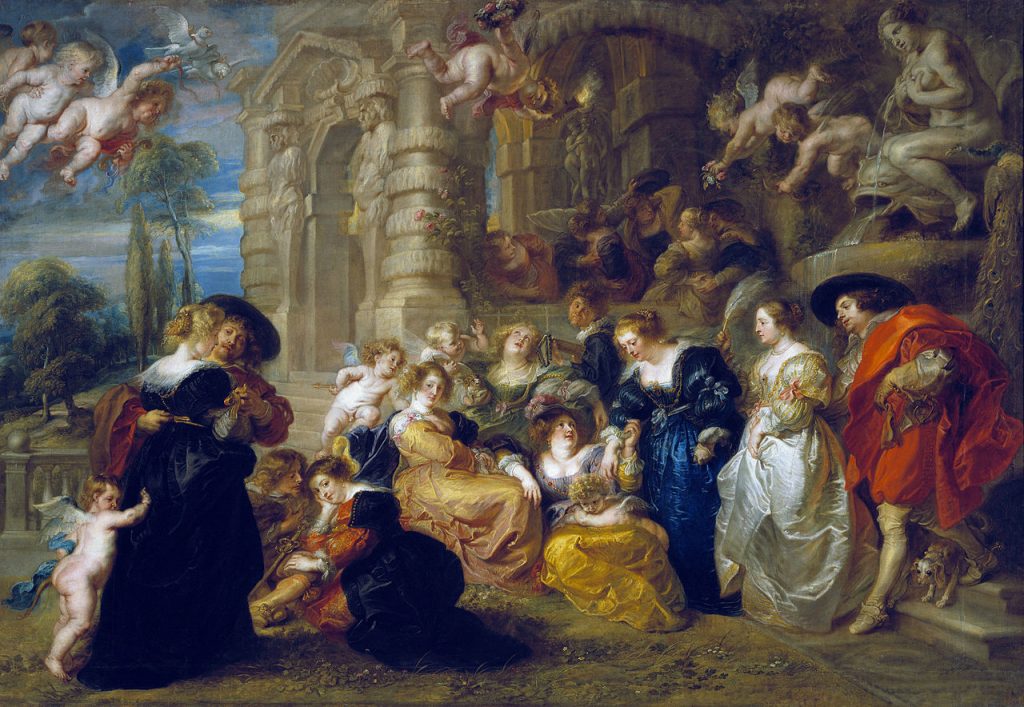
Learn More about Baroque Art on Art Facts
Baroque Artists A-Z
| Bernini, Gian Lorenzo (1598-1680) | 13 Bernini Sculptures |
| Caravaggio (1571-1610) | 10 Caravaggio Paintings |
| Carracci, Annibale (1560-1609) | 10 Carracci Paintings |
| Poussin, Nicolas (1594-1665) | 10 Poussin Paintings |
| Rembrandt van Rijn (1606-1669) | 10 Rembrandt Paintings |
| Rubens, Peter Paul (1577-1640) | 15 Rubens Paintings |
| Velázquez, Diego (1599-1660) | 15 Velázquez Paintings |
| Vermeer, Johannes (1632-1675) | 17 Vermeer Paintings |
Rococo 1730 – 1760
Rococo is the common name of s style that can be described as “Late Baroque.” While Baroque aimed to impress, Rococo took it a step further as even more frivolous elements were integrated into artworks.
Countless trompe-l’œil frescoes were produced during this period. Although it started in France in the 1730s, it quickly spread all across Europe, only to be replaced by the formal Neoclassical style later that century.
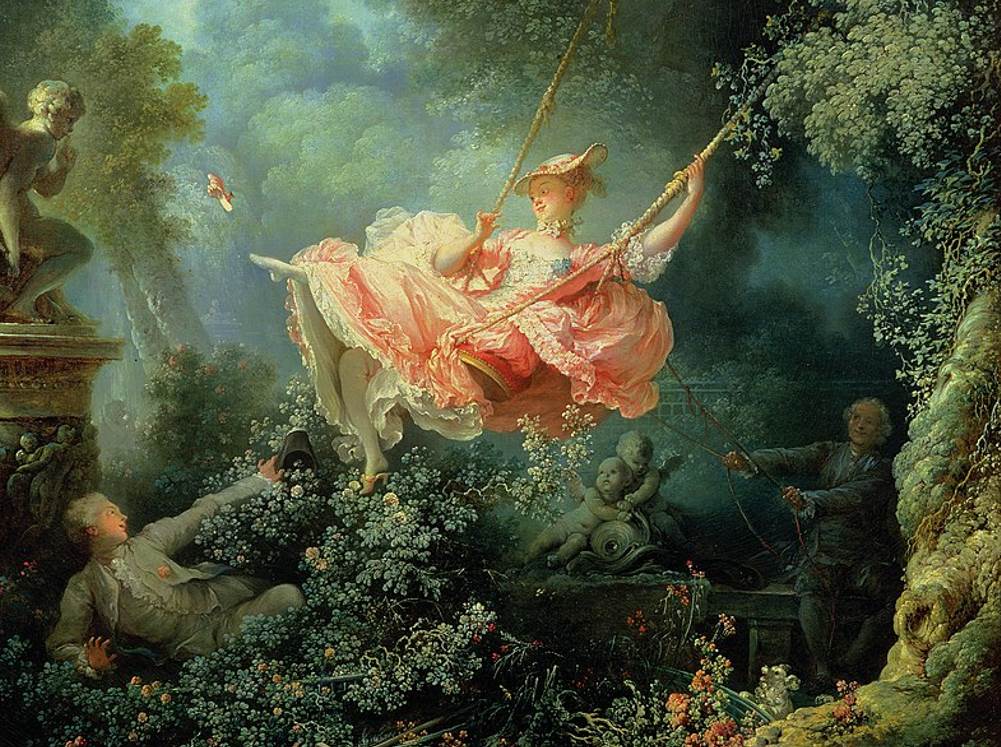
Learn More about Rococo Art on Art Facts
Rococo Artists A-Z
| Boucher, François (1703-1770) | 10 Boucher Paintings |
| Fragonard, Jean-Honoré (1732-1806) | 10 Fragonard Paintings |
| Gainsborough, Thomas (1727-1788) | 10 Gainsborough Paintings |
| Vigée-Lebrun, Élisabeth (1755-1842) | 10 Vigée Le Brun Paintings |
| Watteau, Jean-Antoine (1684-1721) | 10 Watteau Paintings |
Neoclassicism 1770 – 1840
Neoclassical art was developed following the writings of German art historian Johann Joachim Winckelmann in Rome. The rediscovery of Pompeii and Herculaneum and the priceless collection of art that had been preserved there were the main source of inspiration.
The movement was also partially a reaction to the frivolous nature of Rococo at the end of the Ancien Régime in France. The movement continued until well into the 19th century.
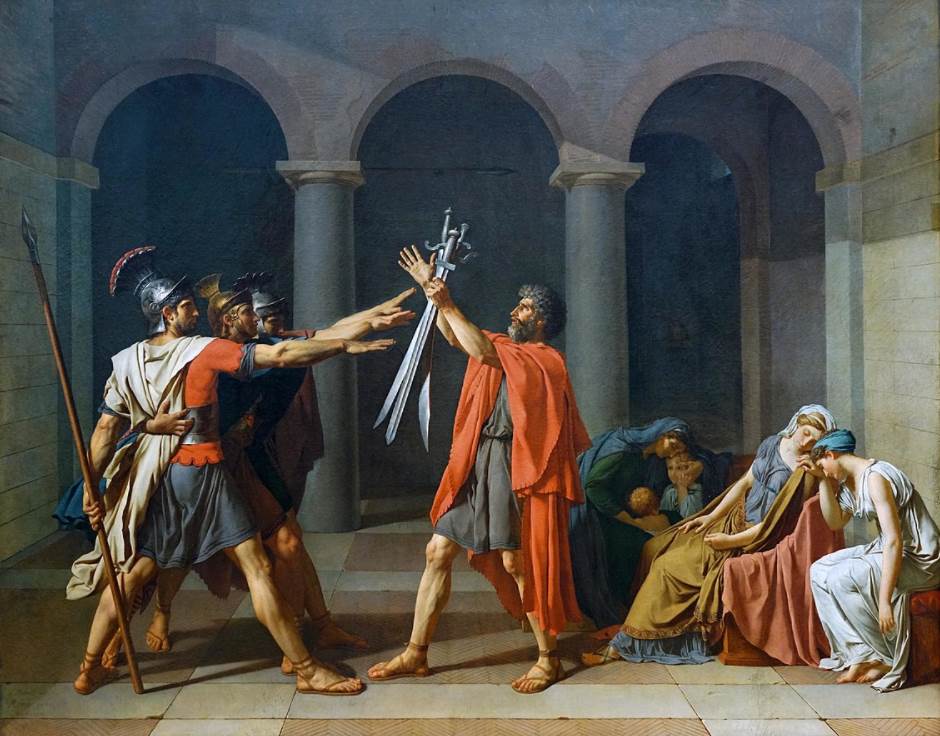
Learn More about Neoclassical Art on Art Facts
Neoclassical Artists A-Z
| Bouguereau, William-Adolphe (1825-1905) | 10 Bouguereau Paintings |
| Canova, Antonio (1757-1822) | 10 Canova Sculptures |
| David, Jacques-Louis (1748-1825) | 10 David Paintings |
| Godward, John William (1861-1922) | 8 Godward Paintings |
| Ingres, Jean-Auguste-Dominique (1780-1867) | 10 Ingres Paintings |
| Kauffman, Angelica (1741-1807) | 10 Kauffman Paintings |
Romanticism 1800 – 1850
Romantic art developed as a reaction to the austere and serious art produced during the Neoclassical period. It focused on raw emotion and a sense of individualism that was non-existent in Neoclassical art.
It was also a reaction to the Industrial Revolution which had emerged during the early 19th century. The rational ideas of the Age of Enlightenment were also tackled during the Romantic period.

Learn More about Romantic Art on Art Facts
Romantic Artists A-Z
| Constable, John (1776-1837) | 10 Constable Paintings |
| Delacroix, Eugène (1798-1863) | 10 Delacroix Paintings |
| Friedrich, Caspar David (1774-1840) | 10 Friedrich Paintings |
| Goya, Francisco (1746-1828) | 10 Goya Paintings |
| Turner, J.M.W. (1775-1851) | 10 Turner Paintings |
Realism 1840 – 1870
Realism in the arts was something that had been integrated for many centuries. The Realism art movement, however, is defined as a period in the 19th century in which artists in France wanted to depict the common man as he was.
The style developed quickly following the French Revolution of 1848 and an increased interest in leftist politics. Various Realism artists around the world can be defined as such because of the realistic depiction of their subject matter.

Learn More about Realism Art on Art Facts
Realism Artists A-Z
| Courbet, Gustave (1819-1877) | 10 Courbet Paintings |
| Eakins, Thomas (1844-1916) | 10 Eakins Paintings |
| Homer, Winslow (1836-1910) | 10 Homer Paintings |
| Hopper, Edward (1882-1967) | 10 Hopper Paintings |
| Millet, Jean-François (1814-1875) | 11 Millet Paintings |
Impressionism 1870 – 1900
Impressionism is an art movement that emerged in France in the second half of the 19th century. It evolved from the accurate depiction of Realism artworks but put a high emphasis on how the artists perceived things.
Although Impressionist artists produce some of the most iconic artworks in history, they faced stiff opposition from academic art critics. This resulted in the establishment of independent art exhibitions in the 1870s.

Learn More about Impressionist Art on Art Facts
Impressionist Artists A-Z
| Degas, Edgar (1834-1917) | 10 Degas Paintings |
| Manet, Édouard (1832-1883) | 10 Manet Paintings |
| Monet, Claude (1840-1926) | 10 Monet Paintings |
| Pissarro, Camille (1830-1903) | 10 Pissarro Paintings |
| Renoir, Pierre-Auguste (1841-1919) | 10 Renoir Paintings |
| Sisley, Alfred (1839-1899) | 10 Sisley Paintings |
Post-Impressionism 1880 – 1920
Post-Impressionism is the name that defines the art movement that evolved as a reaction to Impressionism. Post-Impressionist artists rejected the need to accurately depict light and colors, although they continued the trend of painting outdoors.
The artists of this movement laid the foundation for modern artists and their works are considered to be the precursors of numerous modern art movements. The use of sometimes unnatural and vivid colors is a key characteristic of the movement.

Learn More about Post-Impressionist Art on Art Facts
Post-Impressionist Artists A-Z
| Cézanne, Paul (1839-1906) | 10 Cézanne Paintings |
| Gauguin, Paul (1848-1903) | 10 Gauguin Paintings |
| Rousseau, Henri (1844-1910) | 10 Rousseau Paintings |
| Seurat, Georges (1859-1891) | 10 Seurat Paintings |
| Signac, Paul (1863-1935) | 10 Signac Paintings |
| Van Gogh, Vincent (1853-1890) | 17 Van Gogh Paintings |
Symbolism 1880 – 1910
The Symbolist art movement emerged in Belgium and France in the late 19th century. Although symbols had been included in artworks ever since the early Renaissance, Symbolist artists took this notion a step further.
They transformed the entire artwork into a symbolic representation of the subject matter. This was pretty much the opposite of the ideals of Realism artists who only aimed to depict what they could perceive.
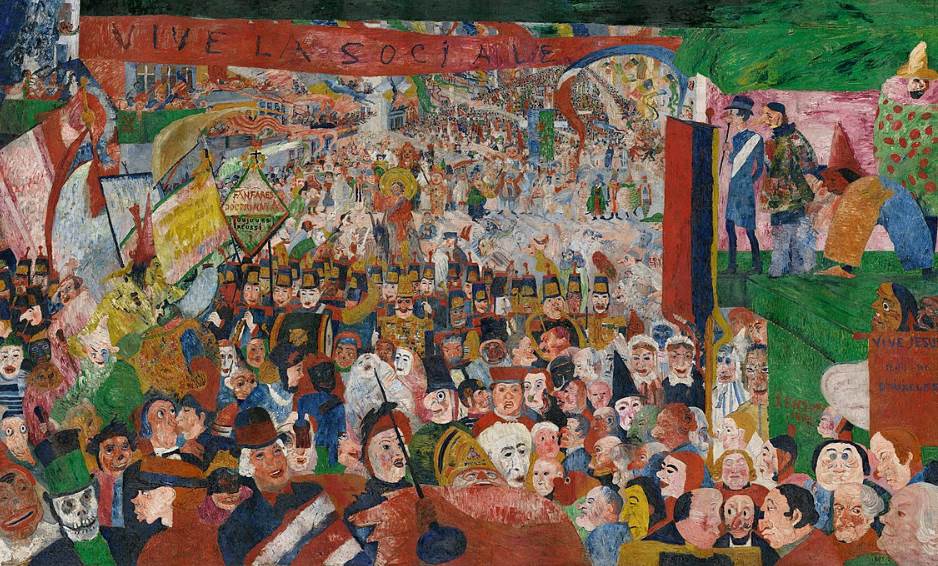
Learn More about Symbolist Art on Art Facts
Symbolist Artists A-Z
| Ensor, James (1860-1949) | 10 Ensor Paintings |
| Hodler, Ferdinand (1853-1918) | |
| Malczewski, Jacek (1854-1929) | |
| Moreau, Gustave (1828-1896) | |
| Redon, Odilon (1840-1916) | 8 Redon Paintings |
| Schwabe, Carlos (1866-1926) | |
| Toorop, Jan (1858-1928) | |
| Vrubel, Mikhail (1856-1910) |
Expressionism 1890 – 1939
Expressionism was one of the first true modernist art movements which emerged in the late 19th century. The main difference from all other movements at that time was that it only featured subjective subject matter.
Depicting personal emotions was not something that had been done before. The movement emerged during the pre-World War I era and remained popular during the Weimar Republic between 1918 and 1933.
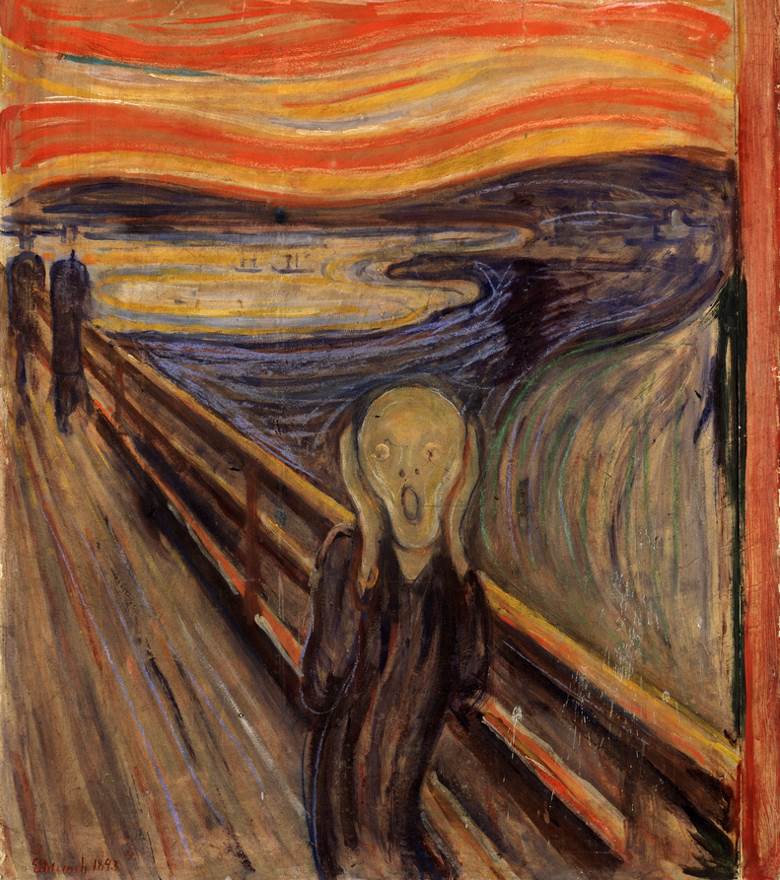
Learn More about Expressionist Art on Art Facts
Expressionist Artists A-Z
| Kandinsky, Wassily (1866-1944) | 10 Kandinsky Paintings |
| Kirchner, Ernst Ludwig (1880-1938) | 10 Kirchner Paintings |
| Klee, Paul (1879-1940) | 10 Klee Paintings |
| Marc, Franz (1880-1916) | 10 Marc Paintings |
| Munch, Edvard (1863-1944) | 10 Munch Paintings |
| Nolde, Emil (1867-1956) |
Art Nouveau 1895 – 1915
Art Nouveau is a style of art that emerged around the turn of the 20th century in multiple countries. It first emerged as a form of interior decoration in Belgium in the 1890s and quickly spread to architecture and the visual arts.
The name of the movement translates to “New Art” and that’s exactly what artists who produced art during this period wanted to achieve, to create a completely new art style. A sense of movement in combination with forms derived from nature defines Art Nouveau.
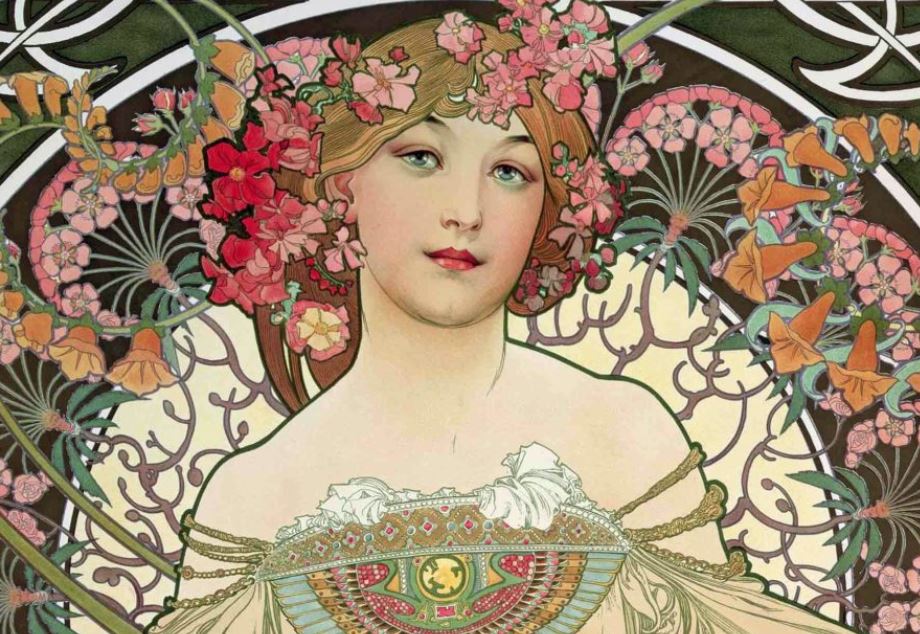
Learn More about Art Nouveau Art on Art Facts
Art Nouveau Artists A-Z
| Gaudí i Cornet, Antoni (1852-1926) | 10 Gaudí Buildings |
| Horta, Victor (1861-1947) | 10 Horta Buildings |
| Klimt, Gustav (1862-1918) | 10 Klimt Paintings |
| Mucha, Alphonse (1860-1939) | |
| Tiffany, Louis Comfort (1848-1933) | |
| Toulouse-Lautrec, Henri (1864-1901) | 10 Toulouse-Lautrec Paintings |
Fauvism 1904-1910
Fauvism is an art movement that was named after a group of modern artists who were referred to as “Les Fauves.” This translates to “The Wild Beasts” and was the name given to the artists in 1905 by a French art critic.
The main reason why the artists were referred to as such is that they integrated extremely vivid colors into their works, more often than not completely distorted from reality. Although the movement only lasted several years, it had a profound effect on the direction of modern art.

Learn More about Fauvism on Art Facts
Fauvism Artists A-Z
| Braque, Georges (1882-1963) | 10 Braque Paintings |
| Derain, André (1880-1954) | 10 Derain Paintings |
| De Vlaminck, Maurice (1876-1958) | 10 De Vlaminck Paintings |
| Dufy, Raoul (1877-1953) | |
| Matisse, Henri (1869-1954) | 10 Matisse Paintings |
| Van Dongen, Kees (1877-1967) |
Cubism 1905 – 1939
Cubism can easily be described as one of the most revolutionary art movements of the early 20th century. It was highly influential in both painting and sculpture and inspired numerous modern artists.
The movement is characterized by the breaking up of certain elements and reassembling them to produce abstract forms. This allowed artists to create artworks that can be viewed from numerous viewpoints.
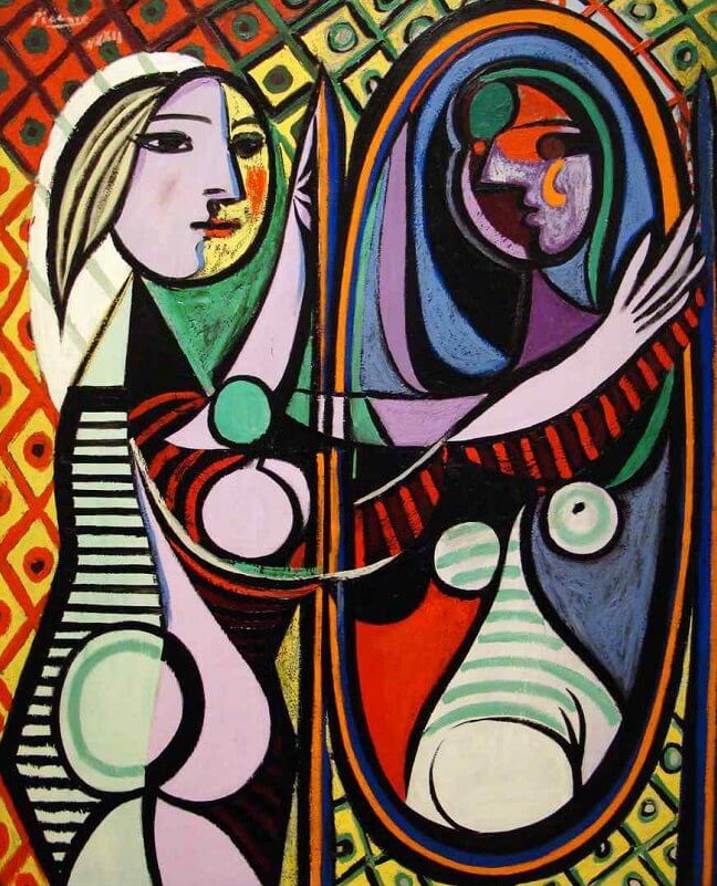
Learn More about Cubist Art on Art Facts
Cubist Artists A-Z
| Delaunay, Robert (1885-1941) | |
| Gleizes, Albert (1881-1953) | |
| Le Fauconnier, Henri (1881-1946) | |
| Léger, Fernand (1881-1955) | |
| Metzinger, Jean (1883-1956) | 10 Metzinger Paintings |
| Picasso, Pablo (1881-1973) | 10 Picasso Paintings |
Dada 1916 – 1925
Dada is the name of an art movement that emerged in various places around the world. This includes Zürich in Switzerland and New York City in the United States in the 1910s and Paris in the 1920s.
The movement initially started as a reaction against World War I and the capitalist society. The main aim of Dada artists was to create nonsensical and irrational art to get their main point of view across.
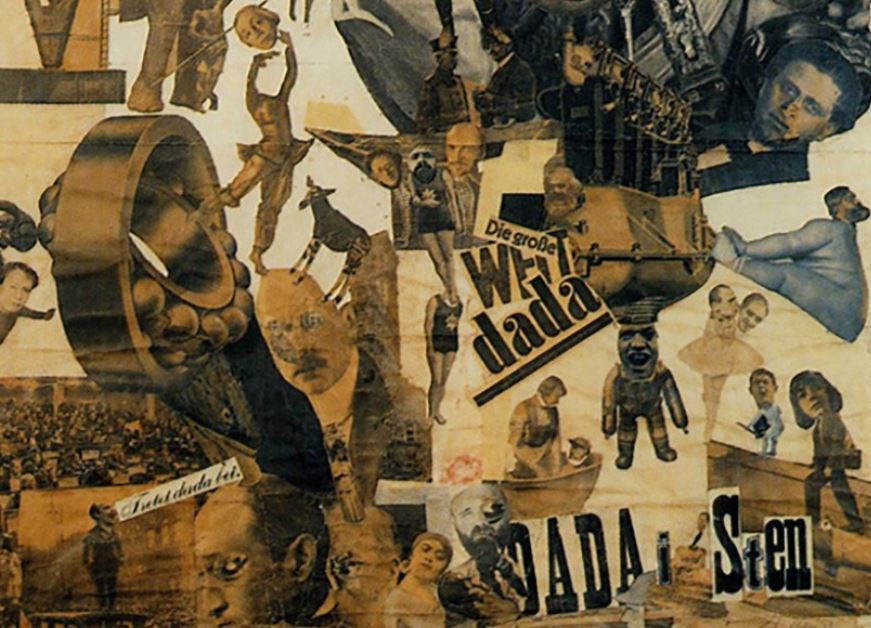
Learn More about Dada Art on Art Facts
Dada Artists A-Z
| Ball, Hugo (1886-1927) | |
| Duchamp, Marcel (1887-1968) | |
| Ernst, Max (1891-1976) | |
| Höch, Hannah (1889-1978) | |
| Ray, Man (1890-1976) | |
| Wood, Beatrice (1893-1998) |
Surrealism 1924 – 1945
Surrealism is an art movement that emerged in the 1920s and can easily be described as one of the most intriguing art movements in history. That’s mainly because of the peculiar subject matter of the artworks that were produced during this movement.
While many artworks simply depict illogical or peculiar scenes, some Surrealist artists also developed a technique to produce art solely created by the unconscious mind. The aim was to combine dreams and reality into a so-called “super-reality.”
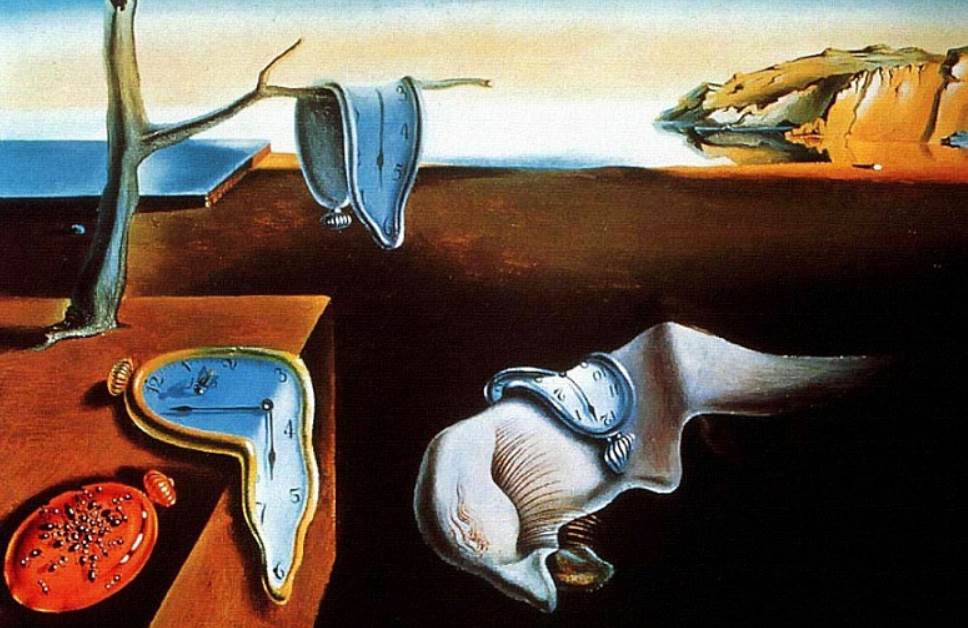
Learn More about Surrealist Art on Art Facts
Surrealist Artists A-Z
| Breton, André (1896-1966) | |
| Dalí, Salvador (1904-1989) | 10 Dalí Paintings |
| Kahlo, Frida (1907-1954) | |
| Magritte, René (1898-1967) | 10 Magritte Paintings |
| Tanguy, Yves (1900-1955) | |
| Varo, Remedios (1908-1963) |
Abstract Expressionism 1945 – 1960
Abstract Expressionism is an art movement that emerged following the conclusion of World War II and which reached its peak in the early 1950s. It was the first art movement that fully developed in the United States.
The style was influenced by certain ideals of Surrealist artists such as spontaneous painting techniques. Instead of focusing on producing a scene derived from the unconscious, the process of producing the work by dripping or splashing paint was preferred.
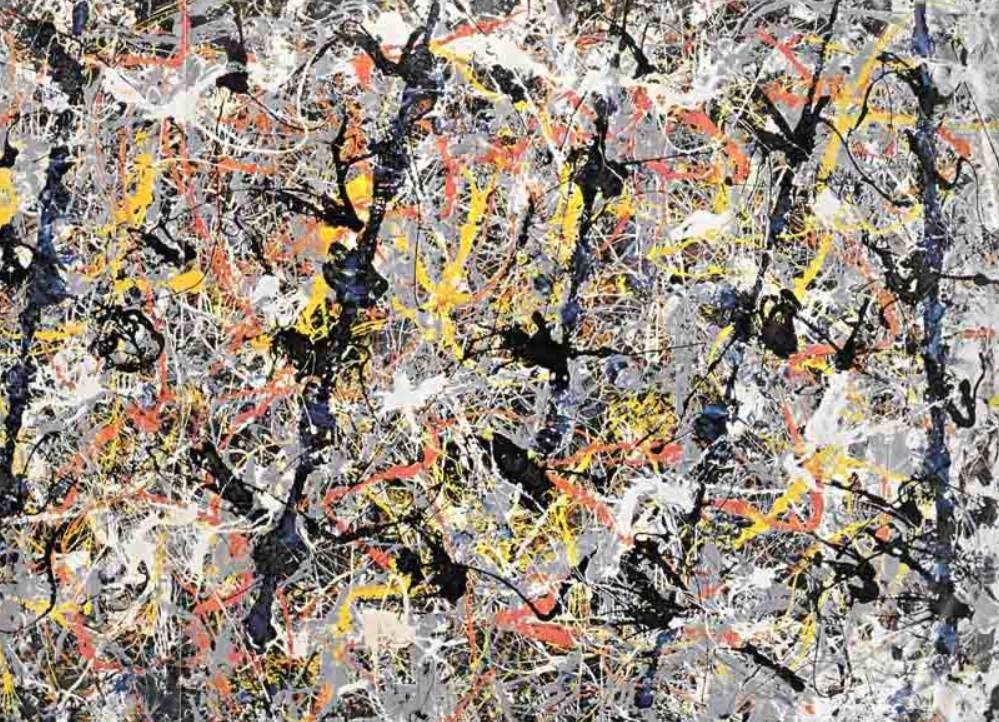
Learn More about Abstract Expressionist Art on Art Facts
Abstract Expressionist Artists
Abstract Expressionist Artists A-Z
| De Kooning, Willem (1904-1997) | |
| Johns, Jasper (born in 1930) | |
| Kline, Franz (1919-1962) | |
| Newman, Bernett (1905-1970) | |
| Pollock, Jackson (1912-1956) | 10 Pollock Paintings |
| Rothko, Mark (1903-1970) |
Pop Art 1955 – 1969
Pop Art is an art movement that emerged in both the United Kingdom and the United States during the 1950s. It’s considered to be a reaction to the works produced by Abstract Expressionist artists.
The artists of the movement aimed to integrate popular items from popular culture and mass media into their artworks. This included imagery derived from advertising and comic books, as well as common items that just about everybody knew about.
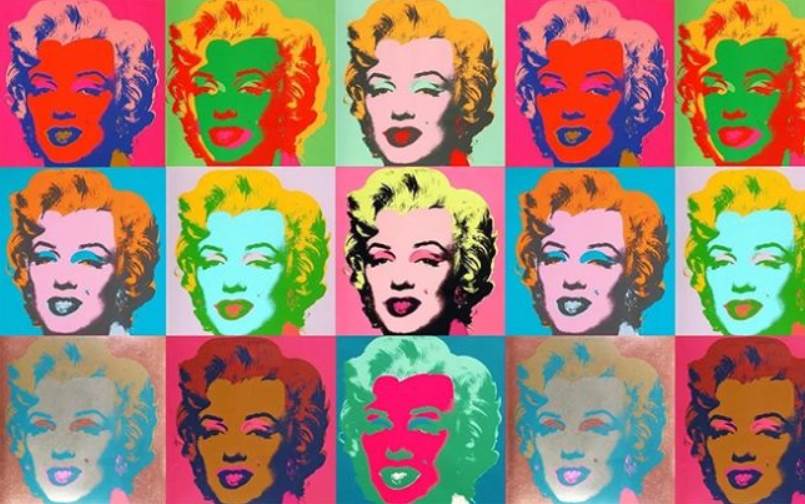
Learn More about Pop Art on Art Facts
Pop Art Artists A-Z
| Hamilton, Richard (1922-2011) | |
| Haring, Keith (1958-1990) | |
| Hockney, David (born in 1937) | |
| Lichtenstein, Roy (1923-1997) | |
| Paolozzi, Eduardo (1924-2005) | |
| Warhol, Andy (1928-1987) |
Op Art 1950s – 1960s
Op Art is short for Optical Art and this name reflects what the art movement was all about. Op Art artists aimed to produce imagery that features the perceived impression of movement or vibrating patterns.
Op Art could also include hidden images and special color effects. What’s remarkable is that the movement didn’t feature works in color until 1965. Before this date, only black and white was used to create the special effects.
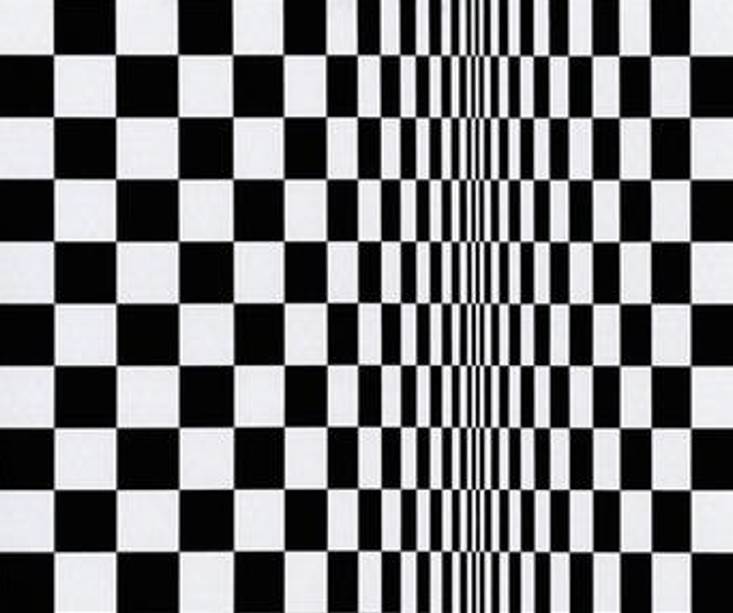
Learn More about Op Art on Art Facts
Op Art Artists A-Z
| Anuszkiewicz, Richard (1930-2020) | |
| Rayo, Omar (1928-2010) | |
| Riley, Bridget (Born in 1931) | |
| Soto, Jesús Rafael (1923-2005) | |
| Stanczak, Julian (1928-2017) | |
| Vasarely, Victor (1906-1997) |
Minimalism 1960 – Present
Minimalism is an art movement that encompasses a wide range of fields, including visual arts, design, architecture, and even music. It gained recognition in the 1960s and 1970s in the United States and spread all across the world.
In visual art, this type of art is also referred to as “minimal art”, “literalist art,” or”ABC Art.” The style is defined by geometric abstractions and can be seen as another reaction to Abstract Expressionism.
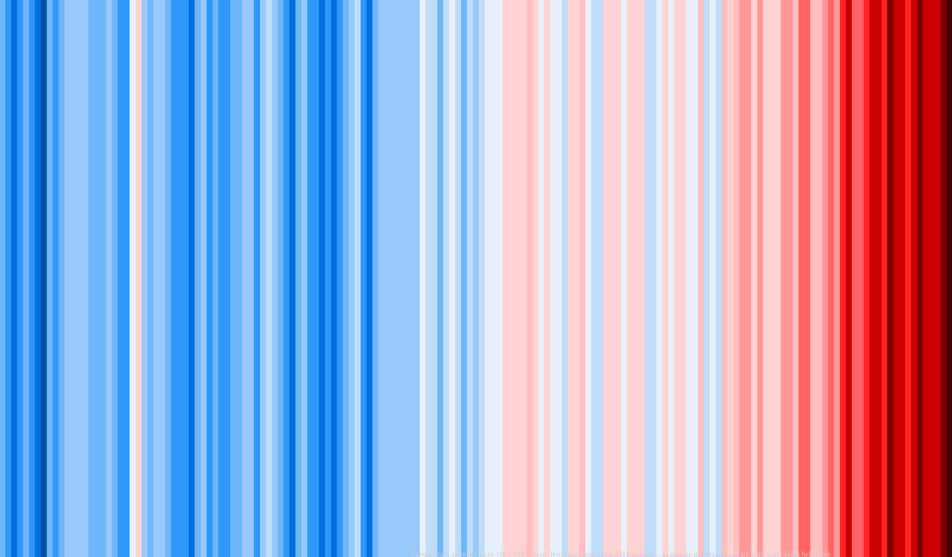
Learn More about Minimalist Art on Art Facts
Minimalist Artists A-Z
| Andre, Carl (born in 1935) | ||
| Flavin, Daniel (1933-1996) | ||
| Judd, Donald (1928-1994) | ||
| LeWitt, Solomon (1928-2007) | ||
| Morris, Robert (1931-2018) | ||
| Stella, Frank (born in 1936) |


